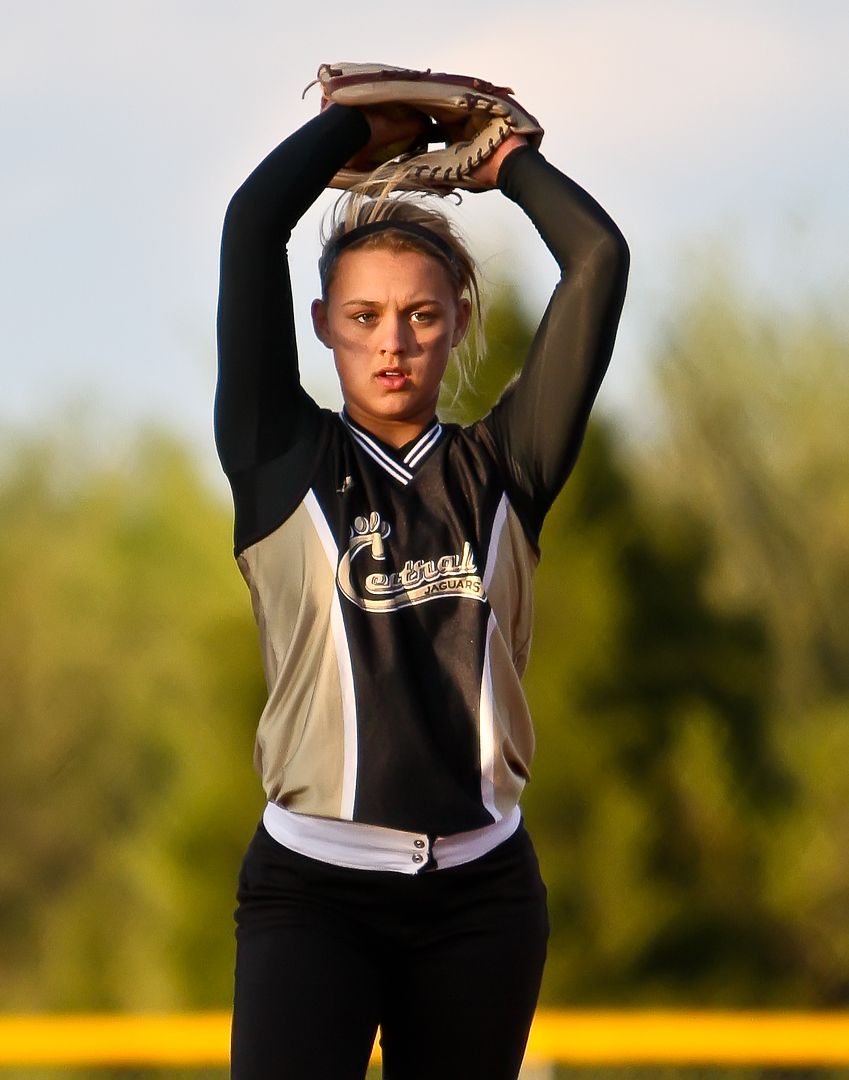Baseball--Through the Fence
So you got a new dslr for Christmas and now you want to take some photographs of your son or daughter playing baseball, softball or t-ball. You'd like to shoot the batter or pitcher but there is a fence obstructing your view. Don't worry, the solution is easy. Shoot right through it. It doesn't matter if the fence is a net made of string or a chain-link type. Both can be dealt with quite easily. When the lens is focused at a distance, near objects partially obscuring your view will seem invisible to your camera.
The first thing to do is to get your lens as close as possible to the fence or net. I don't place the lens touching the fence, just close. It can be so close that your left hand touches the fence at the end of your lens cap. If you are behind the plate, be sure you and your lens won't be hit by a deflected pitch. Have your lens location such that the spaces between the links are maximized for the clearest view.
Second, use a fast lens. You want the largest diameter lens you can use. That will maximize the view and minimize the effect of your obstruction.
Third, try to shoot perpendicular to the fence. Anything more than a very slight angle and the metal or net will have a greater and greater effect in degrading the image quality.
Here is an image taken with the 400mm f/2.8L IS and a 1D Mark IV through a chain link fence. This large diameter lens is more than a match for a chain-link fence. You can see the detail and sharpness.
This was taken using the 300mm f/2.8 IS and again the 1D Mark IV.
While the larger diameter super-telephoto lenses are best, fine images can be obtained using something far less expensive. Here a 70-200mm f/2.8L IS is used through chain-link moments before sundown. The body is a 1D Mark III in this photo from 2010.
Pixel peepers will be able to tell that there is a slight loss of detail in images shot through a fence but that will only be apparent at very large print sizes and even then, the differences will be subtle. Remember, use fast, long lenses, get close to the fence and shoot directly through the spaces. One last tip: These images are exceptional in part because of the light. Late afternoon golden hour light is low in the sky. When the diamond is laid out in the conventional orientation, that light will come from the west and illuminate the face and especially the eyes of the right handed pitcher without a shadow from the cap.
Phil Zivnuska
Comments
|
January
February
March
April
May
June
July
(1)
August (1)
(2)
September (2)
(1)
October (1)
(3)
November (3)
(2)
December (2)
|
(1)
January (1)
(3)
February (3)
(2)
March (2)
(2)
April (2)
(3)
May (3)
(2)
June (2)
(2)
July (2)
(2)
August (2)
(1)
September (1)
(2)
October (2)
(1)
November (1)
(1)
December (1)
|
January
February
March
April
May
June
(1)
July (1)
(3)
August (3)
(4)
September (4)
(5)
October (5)
(4)
November (4)
(1)
December (1)
|
January
February
(2)
March (2)
(3)
April (3)
(2)
May (2)
(3)
June (3)
(2)
July (2)
(2)
August (2)
(2)
September (2)
(2)
October (2)
(2)
November (2)
(3)
December (3)
|
(2)
January (2)
(2)
February (2)
(1)
March (1)
April
May
June
July
August
September
October
November
December
|
January
February
March
April
May
June
July
August
September
October
November
December
|
January
February
March
April
May
June
July
August
September
October
November
December
|
January
February
March
April
May
June
July
August
September
October
November
December
|
January
February
March
April
May
June
July
August
September
October
November
December
|
January
February
March
April
May
June
July
August
September
October
November
December
|
January
February
March
April
May
June
July
August
September
October
November
December
|
January
February
March
April
May
June
July
August
September
October
November
December
|
January
February
March
April
May
June
July
August
September
October
November
December
|

